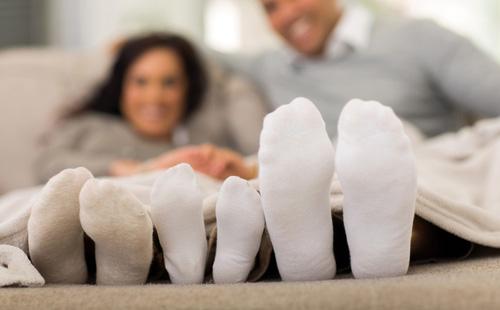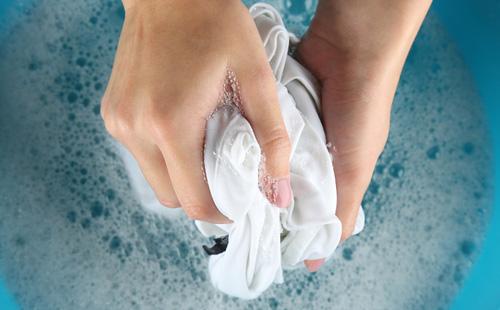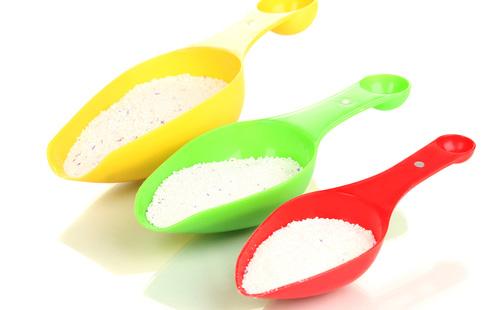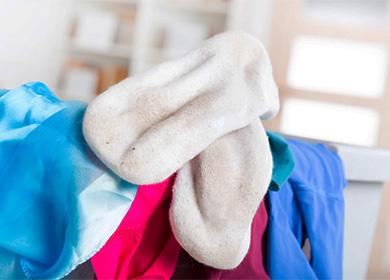The content of the article
In the closet, white socks and knee-high socks are a must. Women wear light hosiery under jeans, tracksuit, shorts. A men's wardrobe is generally unthinkable without a cult accessory. And not only in the summer under light shoes. There are lovers of light shocking who, contrary to tradition, deliberately put on white socks under dark jeans, black loafers or a navy classic suit.
All these cases are united by one common problem: how to keep the product snow-white and get rid of black spools.
How to soak and wash off white socks and tights: 5 general rules
Caring for white socks is problematic. In fact, this is aerobatics in economics. But the desired effect of purity and freshness can still be achieved. Moreover, both manual and machine. Before washing, pay attention to five general recommendations on how to wash white socks.
- Regularity. Fresh plaque is easier to remove, so send the product to the wash after each use.
- Soak. As well as pre-treatment of products with household soap will increase the effect. Often it is in soaking that the main secret of perfect whiteness lies.
- Temperature. Do not wash snow-white socks in very hot water, because the dirt is only more firmly "eat" into the fabric fibers.
- Inversion. Spools and dirt accumulate inside the socks, so it is better to turn them inside out. And when dried in the sun, they will not fade.
- Sorting. Wash white hosiery separately from dark and colored linen.

Things to consider when starting the drum
Many housewives prefer to wash white socks by hand, arriving in the firm belief that careful rubbing with their hands will return the products to their original appearance. In fact, the washer much more efficiently cope with this homework. The main thing is to choose the right mode.
- At a temperature of 40 ° C.So wash your cotton socks on the Cotton cycle. Use powder or gel for white laundry.
- At a temperature not exceeding 30 ° C. Synthetic, silk and wool socks require more care and lower temperatures. You can simply set the appropriate modes: "Synthetics", "Silk", "Wool". Optimal will be the use of detergents for washing products from wool and delicate materials.
To return the socks to a snow-white color will help two tablespoons of ordinary soda, added directly to the drum. And 50 g of dry mustard in a duet with powder will save socks from dark soles and dirty spots.
Features of manual processing
Some of the women will throw even two or three pairs of socks into the washing machine, while others will manually wash the full “sock” basin. If you decide to remove pollution yourself, try to do it as delicately as possible and follow these rules:
- do not rub hard - excessive friction will violate the shape of the product;
- put on the word mittens - it is so convenient to wash a couple at the same time;
- do not twist - so that the socks do not deform, remove water by squeezing them slightly into a lump.

Soaking: “secret” components
To wash white socks from a black sole and other pollution, be patient. You will be satisfied with the results of washing, if you resort to preliminary soaking. According to reviews, the most pronounced effect can be achieved if instead of powder and soap use the following tools. Before any soaking procedure, rinse the socks under water or lightly stretch to remove the main dirt.
Boric acid
- In a bowl, mix two liters of water and four tablespoons of pharmacy boric acid (powder or alcohol).
- Duration of soaking - two hours.
- We erase it manually or in the machine in fast mode.
Vinegar
- In two liters of water heated to 40 ° C, we breed a couple of teaspoons of vinegar.
- Duration of soaking - 30 minutes.
- We erase in the traditional way.
Lemon juice
- In warm water (two liters) squeeze the juice of half a lemon. A bag of store-bought citric acid (20-25 g) is also suitable.
- In acidified liquid for two to three hours we leave white socks.
- We erase it with our hands or in the automatic machine as usual.

Laundry soap
- Wet socks are well soaped with brown soap.
- Leave overnight in an ordinary bag or in an empty container.
- In the morning we wash and rinse.
Pharmacy peroxide
- In two liters of water (60-70 ° C) we pour a couple of tablespoons of hydrogen peroxide and one - liquid ammonia. You can throw a teaspoon of table salt.
- For 15-20 minutes, place the solution pre-washed white socks.
- Rinse twice.
Soda
1. To two liters of hot water (60-70 ° C) add a tablespoon of peroxide and soda.
2. Leave the socks in this composition for 10-15 minutes.
3. Rinse well in cold water, wash in the traditional way.

We act in the old fashion: digestion
For bleaching gray or yellow socks, there is another proven method. Turn on the stove and start digesting. There are three ways to boil white socks.
Method number 1
- In five liters of heated water, dissolve five tablespoons of baking soda and two tablespoons of ammonia.
- Dip the socks into the container, “cook” them for 20-30 minutes.
- After that, it will remain to rinse the clean product in water.
Method number 2
- In boiling water, add sliced circles of lemon (at the rate of one slice per liter of water), crushed pieces of laundry soap or a handful of washing powder.
- Using forceps or a wooden stick, dip the prepared things into a lemon-soap solution.
- Boil for 10-15 minutes.
- Rinse socks at the end of the procedure.
Method number 3
- Boil five liters of water in a saucepan with one lemon sliced.
- Boil the citrus for no more than five minutes and pull out.
- Put pre-washed white socks in acidified water.
- Boil them for 20-25 minutes.
- Things can not be rinsed, socks will have a delicate lemon flavor.

Special household chemicals
How to whiten white socks at home? Cope with dark spots on white socks and chemicals: stain removers, oxygen bleaches, whiteness. True, do not use the latter too often, as it corrodes the fabric. In general, the use of modern stain removers is very convenient, effective and safe if you work in protective gloves and clearly follow the instructions on the labels.
Shave Socks: Spool Removal Techniques
Even the most expensive and high-quality white socks are not immune from the appearance of dark spools. If this sure sign of “wear” appears for the following reasons.
- Fabric structure. Over time, the spools will inevitably appear on natural socks (cotton, linen, woolen). But synthetic ones (viscose, nylon) will practically not be “peeled”.
- Invalid wash mode. Properly (under the cloth), select the temperature, wash time, spin speed.
- The use of "wrong" means. For delicate materials, take special gentle gels. They will prevent the appearance of pellets.
- Intense friction. In the manual wash mode, do not rub the fabric excessively. This will only ruin the product.
The spools can only be removed mechanically. How it's done?
Shaver (machine for “haircut” the spools)
- Turn on the machine (running on batteries).
- In a circular motion, carefully treat the problem areas.
- Clean the spool container.

Shaver
- Take a razor that's not too sharp.
- Stretch your sock well, or put it on your foot even better.
- Use cautious movements from bottom to top.
Adhesive tape, tape or adhesive tape
- Cut a strip of adhesive tape of the required length.
- With a good press, glue the tape to the "cried" place.
- Tear abruptly.
What you need to know about off-white
So, you have chosen the appropriate method of washing with or without boiling and are ready to return their snow-white color to the socks. But before you remove the trampled white socks, pay attention to one detail. White has ... shades. There is a definition of “off-white”: not quite white, yellowish, almost white, cream, off-white, beige. In fact, "whitish." Why such difficulties? Simply, if your sports or branded cotton socks are created in off-white color, do not go to the point of absurdity and do not try to make them whiter than they really are.

